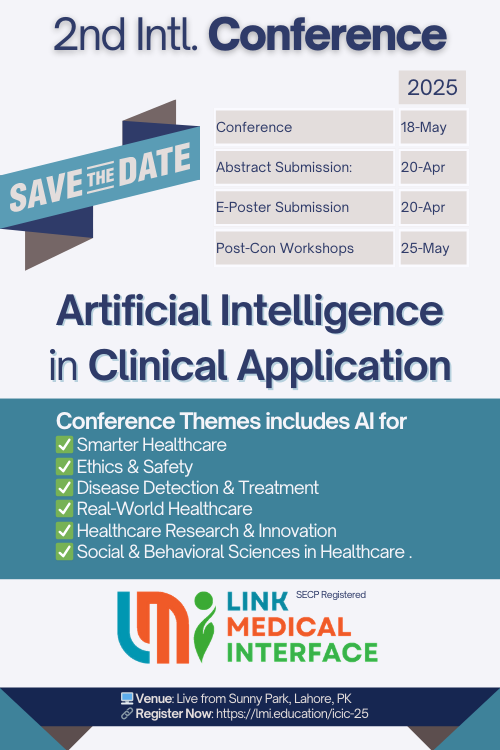Clinical Profile and Risk Factors of Cerebral Venous Sinus Thrombosis
DOI:
https://doi.org/10.61919/jhrr.v4i2.865Keywords:
Cerebral Venous Sinus Thrombosis, CVST, Neurology, Venous Thrombosis, Brain Clots, Diagnostic Imaging, Epidemiology of CVSTAbstract
Background: Cerebral venous sinus thrombosis (CVST) is a rare but serious neurovascular disorder that can lead to life-threatening complications such as hemorrhage and cerebral edema. This condition presents with a wide array of symptoms due to the formation of blood clots in the cerebral venous sinuses, impairing the drainage of deoxygenated blood and cerebrospinal fluid from the brain.
Objective: The aim of this study was to elucidate the clinical profile and risk factors associated with CVST, enhancing the understanding of its epidemiology and facilitating better diagnostic and therapeutic strategies.
Methods: This prospective cross-sectional study was conducted at the Department of Neurology, Jinnah Postgraduate Medical Centre, Karachi, Pakistan. A total of 135 participants diagnosed with CVST were enrolled through non-probability consecutive sampling. Participants underwent comprehensive physical and neurological examinations using a structured Clinical Patient Assessment Form. Diagnostic imaging included MRI, MRV, CT, and CT venography, although the principal diagnostic tools were CT and MRV. Data collection focused on demographics, clinical manifestations, and risk factors, with all information analyzed using SPSS version 25.
Results: The study population predominantly consisted of females (74.8%) with the age group of 31-40 years being the most common (31.1%). Headache was the most frequently reported symptom (90.4%), followed by hemiparesis (53.3%) and seizures (40%). Significant risk factors included postpartum status (50.4%), iron deficiency anemia (25.9%), and genetic prothrombotic conditions (9.6%). Imaging studies revealed that the transverse sinus was the most affected site (74.1%).
Conclusion: CVST exhibits a diverse range of clinical presentations and is associated with multiple demographic and physiological risk factors. Early diagnosis and management are crucial to prevent severe outcomes. This study highlights the importance of considering a detailed clinical and risk factor profile in patients presenting with neurological symptoms to aid in timely and accurate diagnosis of CVST.
Downloads
References
Bai C, Wang Z, Stone C, Zhou D, Ding J, Ding Y, et al. Pathogenesis and Management in Cerebrovenous Outflow Disorders. Aging Dis. 2021;12(1):203.
Ferro JM, Canhão P, Stam J, Bousser MG, Barinagarrementeria F. Prognosis of Cerebral Vein and Dural Sinus Thrombosis: Results of the International Study on Cerebral Vein and Dural Sinus Thrombosis (ISCVT). Stroke. 2004;35(3):664-70.
Bousser MG, Ferro JM. Cerebral Venous Thrombosis: An Update. Lancet Neurol. 2007;6(2):162-70.
Saadatnia M, Fatehi F, Basiri K, Mousavi SA, Mehr GK. Cerebral Venous Sinus Thrombosis Risk Factors. Int J Stroke. 2009;4(2):111-23.
Ferro JM, Canhão P. Cerebral Venous Sinus Thrombosis: Update on Diagnosis and Management. Curr Cardiol Rep. 2014;16:1-0.
Allroggen H, Abbott RJ. Cerebral Venous Sinus Thrombosis. Postgrad Med J. 2000;76(891):12-5.
Filippidis A, Kapsalaki E, Patramani G, Fountas KN. Cerebral Venous Sinus Thrombosis: Review of the Demographics, Pathophysiology, Current Diagnosis, and Treatment. Neurosurg Focus. 2009;27(5):E3.
Fischer C, Goldstein J, Edlow J. Cerebral Venous Sinus Thrombosis in the Emergency Department: Retrospective Analysis of 17 Cases and Review of the Literature. J Emerg Med. 2010;38(2):140-7.
Bousser MG, Crassard I. Cerebral Venous Thrombosis, Pregnancy and Oral Contraceptives. Thromb Res. 2012;130:S19–22.
Coutinho JM. Cerebral Venous Thrombosis. J Thromb Haemost. 2015;13:S238-44.
Lauw MN, Barco S, Coutinho JM, Middeldorp S. Cerebral Venous Thrombosis and Thrombophilia: A Systematic Review and Meta-Analysis. Semin Thromb Hemost. 2013;39:913-27.
Tanislav C, Siekmann R, Sieweke N, Allendörfer J, Pabst W, Kaps M, et al. Cerebral Vein Thrombosis: Clinical Manifestation and Diagnosis. BMC Neurol. 2011;11:1-5.
Mehvari Habibabadi J, Saadatnia M, Tabrizi N. Seizure in Cerebral Venous and Sinus Thrombosis. Epilepsia Open. 2018;3(3):316-22.
Hemasian H, Hakamifard A. Thrombophilic Evaluation in Cases of Cerebral Venous Sinus Thrombosis. Oman Med J. 2018;33(6):537.
Issar P, Chinna S, Issar SK. Evaluation of Cerebral Venous Thrombosis by CT, MRI and MR Venography. J Assoc Physicians India. 2017;65(11):16-21.
Khealani BA, Wasay M, Saadah M, Sultana E, Mustafa S, Khan FS, et al. Cerebral Venous Thrombosis: A Descriptive Multicenter Study of Patients in Pakistan and Middle East. Stroke. 2008;39(10):2707-11.
Lal D, Gujjar AR, Ramachandiran N, Obaidi A, Kumar S, El-Tigani M, et al. Spectrum of Cerebral Venous Thrombosis in Oman. Sultan Qaboos Univ Med J. 2018;18(3):e329-37.
Ibrahim EA, Mohamed RE, Ahmed KA, Haroun MS, Abdalla YA, Omer ME, et al. Clinical Profile and Risk Factors of Cerebral Venous Sinus Thrombosis (CVST) in Sudan: A Multicenter Cross-Sectional Study. Ann Med Surg. 2022;84:104891.
Narayan D, Kaul S, Ravishankar K, Suryaprabha T, Bandaru VS, Mridula KR, et al. Risk factors, clinical profile, and long-term outcome of 428 patients of cerebral sinus venous thrombosis: Insights from Nizam′ s Institute Venous Stroke Registry, Hyderabad (India). Neurol India. 2012;60(2):154-9.
Gurram S, Thambi M, Naik A, Gorthi SP. Critical Prognostic Factors in Cerebral Venous Sinus Thrombosis: An Observational Study. Annals of Indian Academy of Neurology. 2024 Jan 1;27(1):67-71.
Downloads
Published
How to Cite
Issue
Section
License
Copyright (c) 2024 Huma Khan, Khalid Sher, Khawaja Moiz Ullah Ghouri

This work is licensed under a Creative Commons Attribution 4.0 International License.
Public Licensing Terms
This work is licensed under the Creative Commons Attribution 4.0 International License (CC BY 4.0). Under this license:
- You are free to share (copy and redistribute the material in any medium or format) and adapt (remix, transform, and build upon the material) for any purpose, including commercial use.
- Attribution must be given to the original author(s) and source in a manner that is reasonable and does not imply endorsement.
- No additional restrictions may be applied that conflict with the terms of this license.
For more details, visit: https://creativecommons.org/licenses/by/4.0/.






